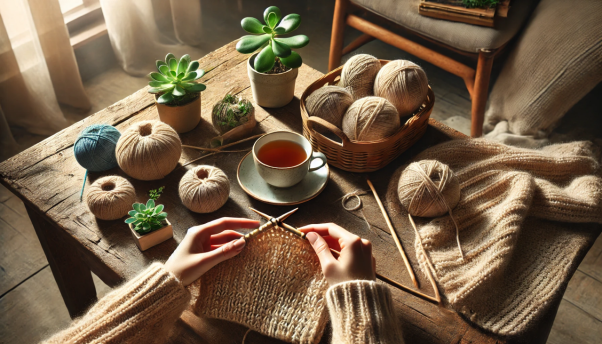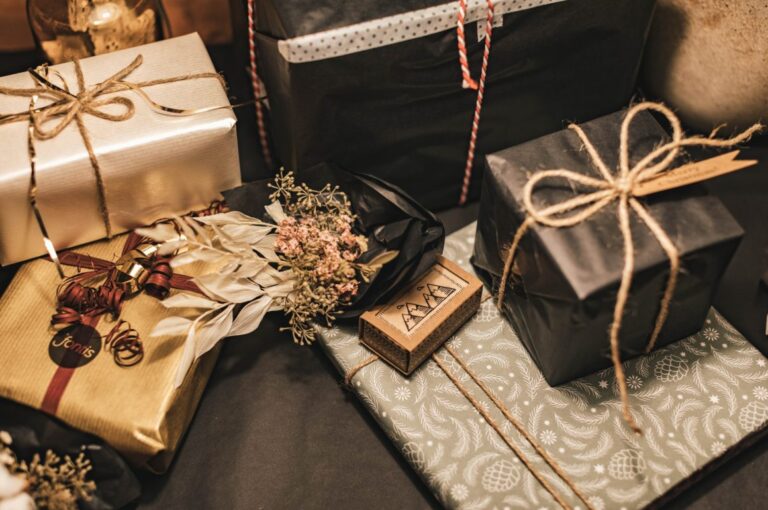
Fast fashion is everywhere—clothes made quickly, worn a few times, then tossed aside. But people are starting to rethink how they shop. Instead of buying cheap, trendy clothes that wear out fast, many are choosing slow fashion—a movement that focuses on quality, sustainability, and making clothes last.
Knitting is a perfect fit for this lifestyle. When you knit your clothes, you control the materials, avoid waste, and create something meaningful. Plus, it is a relaxing and creative way to build a wardrobe that is personal, stylish, and built to last.
So, how exactly does knitting help the environment and support slow fashion? Let’s break it down.
What is slow fashion?
Slow fashion is all about making smarter choices when it comes to clothing. Instead of chasing every new trend, it encourages people to:
- Buy fewer, higher-quality pieces
- Choose clothing made with ethical labor and sustainable materials
- Repair, repurpose, and take care of what they already own
This movement helps reduce waste, supports fair wages for workers, and lessens the environmental impact of mass production. Instead of filling closets with cheap, throwaway clothes, slow fashion is about investing in pieces that last.
Knitting as a sustainable alternative
Knitting goes hand in hand with slow fashion. When you knit your clothes, you are in control. You choose the yarn, the pattern, and the style—making each piece unique.
Instead of relying on factory-made clothes that contribute to pollution, knitting lets you create something with natural, biodegradable fibers like wool, cotton, and bamboo. These materials break down over time, unlike synthetic fabrics, which can sit in landfills for years.
How knitting helps the environment
The fashion industry is one of the world’s biggest polluters. Factories use massive amounts of water, energy, and chemicals to produce clothes. The good news? Knitting avoids all that.
Here is how:
- Less waste: You only use what you need, with no extra fabric scraps left behind.
- No factory pollution: No harmful dyes or chemicals are released into the environment.
- Eco-friendly yarn choices: Organic, recycled, and plant-based yarns reduce waste even more.
- Lower carbon footprint: Locally sourced yarn cuts down on emissions from transportation.
Every hand-knit piece means one less item from a factory, helping reduce the overall impact on the planet.
Knitting encourages mindful fashion choices
One of the biggest problems with fast fashion is impulse buying—grabbing clothes without thinking and changing that mindset.
When you knit something, you invest time, effort, and creativity into it. That makes you value your clothes more. Instead of buying cheap sweaters that wear out in months, you create pieces designed to last for years.
Plus, knitting gives you complete control over fit, style, and comfort. No more struggling to find the perfect size or dealing with itchy, uncomfortable fabrics. You get exactly what you want, made just for you.
Knitting builds a community
Knitting is not just a solo activity—it brings people together. Many knitters join local groups or online communities to share patterns, trade yarn, and support each other’s projects.
Slow fashion is not just about clothing; it is about changing the way we think about fashion as a whole. When knitters come together, they help spread the idea that clothing should be personal, thoughtful, and sustainable.
Getting started with sustainable knitting
If you want to embrace slow fashion through knitting, here are a few simple ways to start:
- Use natural or recycled yarn: Wool, cotton, bamboo, and recycled fibers are great choices.
- Invest in good tools: Durable knitting needles and sharp embroidery scissors help reduce waste.
- Choose practical projects: Make things you will actually wear and use.
- Take care of your pieces: Wash gently, repair when needed, and repurpose old projects.
Final thoughts
Slow fashion is changing the way we shop, and knitting is playing a big role in that shift. By creating handmade pieces, you are reducing waste, avoiding mass production, and making something truly special.
To make your knitting even more sustainable, keep your materials organized and protected. Using project bags for knitting helps prevent yarn from getting tangled, keeps tools in one place, and reduces the need for unnecessary replacements.
So whether you are a seasoned knitter or just starting, know that every stitch counts. You are not just making clothes—you are making a difference.
Keep an eye for more latest news & updates on Buzz Feed!






